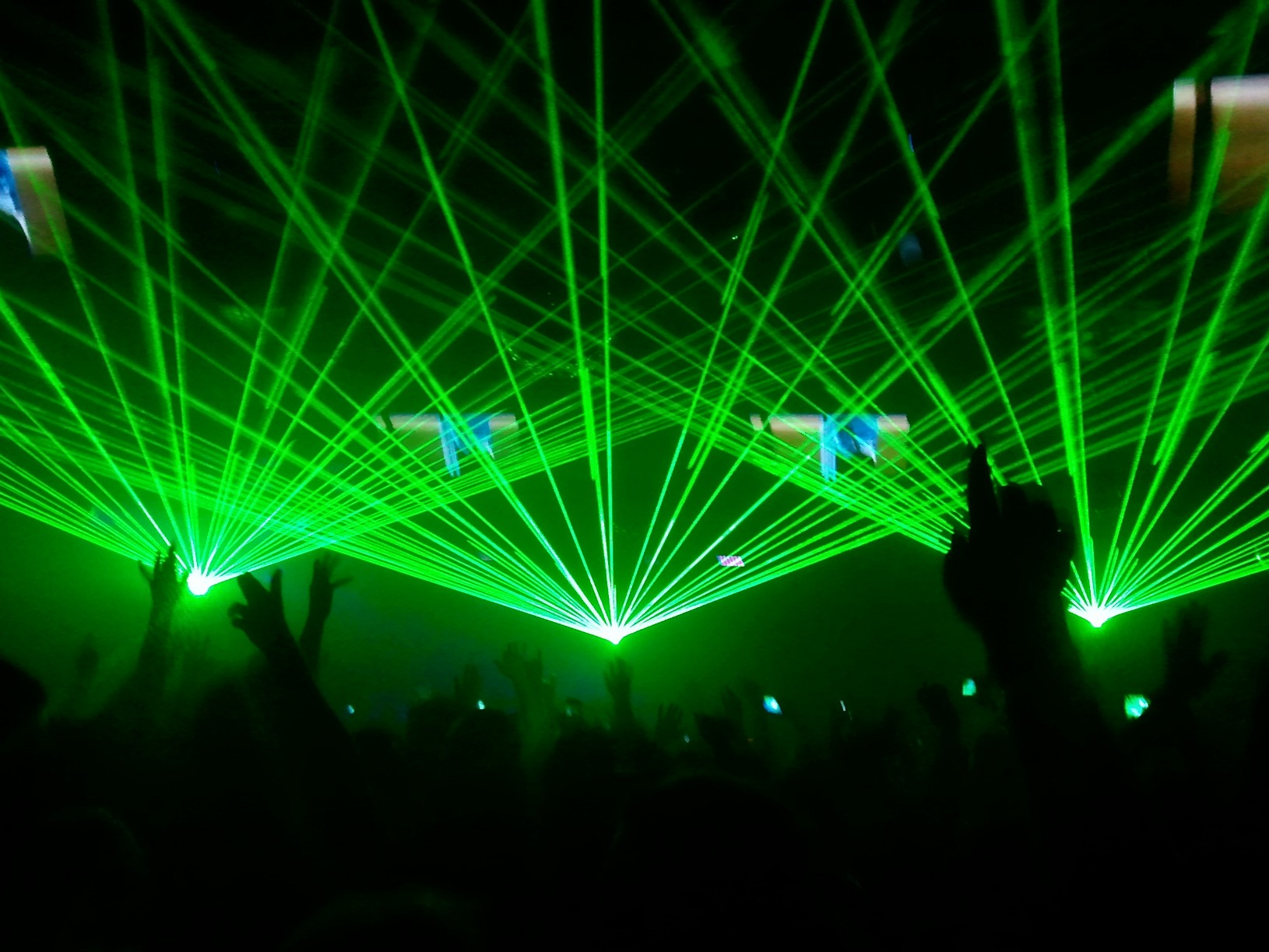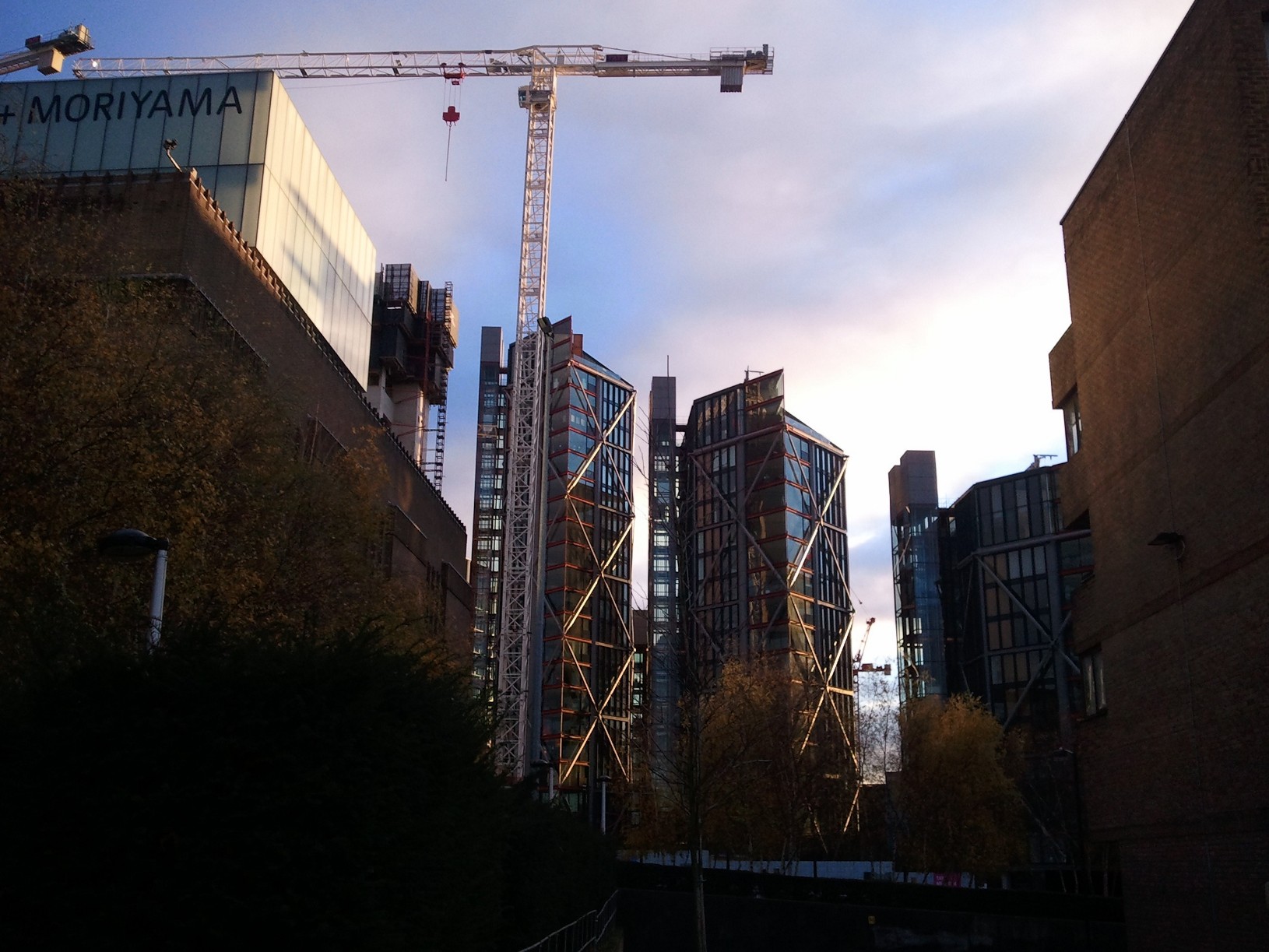

We’ve come to London, at a friend’s urging, to watch the world’s “7th best” DJ (what kind of standards authority could possibly issue such a ranking?), but have arrived early for a day of museum visits. The Klein and Moriyama photography exhibition at the Tate is breathtaking and exhausting.1 It is already dark, but still hours before the show, when we step out into the cheerful corridor of pop-up Christmas shops along the Thames; it is decided to enjoy, in turn, the National Portrait Gallery and beer. The gallery’s parade of scientific and political luminaries, smiling condescendingly in glossy dinner jackets, is enough to make a comfortable pale-skinned graduate student who has never known a day’s involuntary privation nostalgic for the lost glory of Emprie. The one-legged man in a filthy army coat moaning below Charing Cross cures nostalgia.
The tube stop nearest the club is called “Elephant and Castle”. Arriving aboveground, we discover a bar or Thai restaurant named “Elephant and Castle” in the ground floor of a gloomy Cold-War apartment building. Plaques outside announce that the Elephant and Castle was a historic theater rebuilt as a public house in the eighteenth century, and again in the nineteenth; they offer no insight into the provenance of the current establishment. Inside are tropical-print wallpaper, thumping dancehall music, green-tea scented candles, weak beer, comfortable sofas, antique side tables, and men with neck tattoos.

The last club I visited was a glossy shoeboxlike enclosure containing roughly a hundred fifty MIT students and one Canadian hip-hop sensation and former child actor. The Ministry of Sound is a cavernous, multi-room affair with security guards who stick their hands deep into your pants in search of drugs, bottomless laser-lit haze and bone-rattling speakers which stretch from ceiling to floor. It is thrilling and disorienting to find one’s body transformed into a percussion instrument, thin skin wrapped around a column of air vibrating hideously.
In a place as concerned with appearances as music—one or two small pyramids might have been built with the labor expended in toning the thousand biceps swelling in time against designer T-shirts—I feel slightly absurd dressed for a museum outing. From my position near the back of the room the 7th best DJ in the world is invisible for most of the show. We are treated instead to a video montage of storm troopers having their eardrums blown out and the DJ being famous on more photogenic stages. The dance floor is claustrophobic and there is little space for dancing beyond a futile crustacean twitching of the forearms and shins. On our right is a party of baby-faced, reddening Koreans in Oxfords and checked shirts; on our left a woman, face creased deeply with age, twitching poignantly, alone.

At four in the morning we stumble out of the club. We’re hungry and promptly swindled by a nearby kebab shop. We spend the next half hour wandering slowly through windy, desolate Southwark, eventually descending out of the cold into a tube station just as the first birds wake in the skeletal trees and the underground grumbles to life. At eight we collapse in North London, recovering in the early afternoon to watch the light fall behind stained glass at Westminster evensong, vision still barred black by the flash of strobe lights.
The Kleins are better. The show is encyclopedic, with (several!) complete books of photographs sliced down the spine and splayed along a wall. I regard this as irresponsible curation. ↩